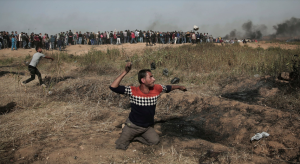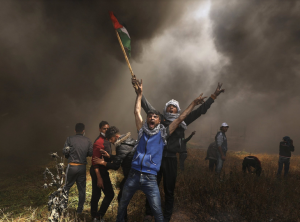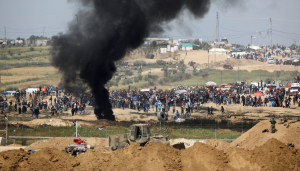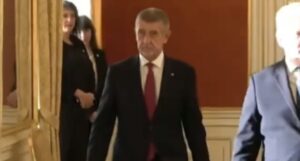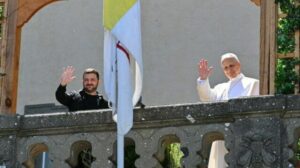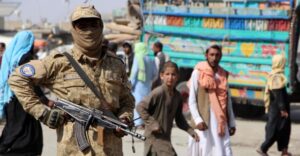With tear gas and burning tires fouling the air and gunfire periodically ringing out from one direction, Palestinian demonstrators and Israeli soldiers faced off along the fence hemming in the Gaza Strip for a second week on Friday. By nightfall, the Gaza Health Ministry said, seven Palestinians had been killed, two of them teenagers, and hundreds wounded.
The demonstrations were smaller than those last week, when 21 people were killed. But the death toll was significant, despite a pledge by Hamas, the militant group that controls Gaza, that the protest would be peaceful, and by Israel that it had learned from last week and would use live fire judiciously.
Hamas insisted that demonstrators would be unarmed, though it carved out an exception for rock throwing.
“Today we are sending a message that our struggle is without arms and guns, and we will wait and see if the world receives the message, and pressures Israel to stop its crimes against our people,” Mahmoud al-Zahar, a senior Hamas leader, told reporters at the protests in Gaza City. “And if the world fails to do so, we then will be obliged to use our arms.”
Israeli military officials had said they would use live ammunition if necessary to stop Palestinians from penetrating or damaging the barrier fence, which is actually at least two fences — one a crude barrier of barbed wire; the other, some yards behind, a more complicated structure equipped with electronic sensors.
The Israelis released surveillance video clips late in the day that they said showed attempts to cut openings in the barrier, and military officials said that some demonstrators were throwing firebombs at Israeli soldiers.
In one instance, in the Shejaiya neighborhood of Gaza City, Palestinians appeared to try to cross the fence and Israeli soldiers responded with live fire. Hundreds of protesters fled from the barrier en masse. Children cried and families took cover behind parked cars until the shots ceased.
“I believe I’m going to cross the fence, even if they shoot me or cut me in half,” said Bilal Abu Zaher, 26, who came to the protest on crutches. He said he had been disabled since his house was damaged by an Israeli airstrike in the 2008 Israel-Gaza war. On Thursday, he said, Israeli soldiers shot at his wheelchair, damaging it. On Friday, he was back at the fence.
“I’m here for dignity,” he said. “My goal is to return to the land.”
The protests are aimed at Israel’s blockade of Gaza, which began after Hamas seized control in 2007. Billed as a six-week “March of Return,” the demonstrations are to culminate on May 15 with Nakba Day, which commemorates the flight and expulsion of hundreds of thousands of Palestinians during Israel’s 1948 war for independence.
By Friday, it was clear that they had already achieved one Palestinian aim: shifting the focus of international attention away from the struggle between Hamas and the West Bank-based Palestinian Authority — and onto the stark image of Gaza as a prison with Israel as its jailer.
Palestinian protesters flocked to the barrier fence on Friday, chanting, waving flags, flying kites — and setting fire to piles of tires.
Hamas, which has been effectively running the protests, said the smoke screen was a defensive measure to protect unarmed Palestinians from being shot, as many were last Friday, the first day of the demonstrations.
Israeli officials insisted the smoke screens were meant to provide cover for militants trying to make it across the barrier fence to attack soldiers and Israeli civilians living in farming communities nearby.
Either way, the smoke screens appeared effective: From the Israeli side, a detachment of Israeli soldiers ensconced behind earthen berms near the Nahal Oz kibbutz could only occasionally glimpse the hundreds of protesters in the Shajaiye neighborhood of Gaza City through vast clouds of acrid black smoke.
The Israelis first tried dispersing the smoke with an industrial-sized fan, trucked in on trailers. When that did not immediately work, they began trying to douse the fires with water cannons, setting off cheers among the protesters when that, too, did little.
In Shejaiya, one of five main gathering points for the protesters, ambulances and stretchers came and went throughout the day. At one point, as a lightly wounded man holding a slingshot was carried off, he made an obscene gesture toward the Israeli side, prompting cheers and laughter; another held up two fingers in a victory sign.
Israeli news outlets reported that Palestinians had built an ancient war machine — a trebuchet, or slingshot-like catapult — to hurl heavy stones or even burning tires at the Israeli side. The reports included photos of the trebuchet but there was no confirmation on Friday that it had been deployed.
The United Nations urged both sides to avoid violence and said there were “strong indications” that Israeli security forces had used excessive force last week in driving back protesters, which may have breached international law.
Elizabeth Throssell, a spokeswoman for the United Nations human rights office in Geneva, said the high casualty toll among protesters who were unarmed or did not pose a serious threat to security forces — and in some cases were running away from the fence — suggested Israeli troops may have used excessive force.
Some protesters had reportedly acted dangerously, but international law permits the use of lethal force only as a last resort in the face of an imminent threat of death or serious injury, she said. “An attempt to approach or cross the green-line fence by itself certainly does not amount to a threat to life or serious injury that would justify the use of live ammunition,” she said.
“If there is unjustified and unlawful recourse to firearms resulting in death, that may amount to willful killing and that’s a grave breach of the fourth Geneva Convention,” she added.
On Friday, despite the occasional crack of gunfire and whistle of bullets, which sent demonstrators running for cover, there was an eerily festive, almost carnival-like atmosphere on the periphery, with vendors selling food, drinks and flags. Israeli drones and surveillance balloons flew overhead, as did the occasional kite in the Palestinian national colors of red, black, white and green.
On the Israeli side, civilians sought vantage points with binoculars and cameras, straining to see the action from kibbutz watchtowers or outcroppings of farmland.
For much of the afternoon, thousands of Palestinians massed a few hundred yards from the fence, cheering and chanting like fans in a soccer stadium, applauding protesters who defied the Israelis, and jeering the Israelis’ firing of tear gas canisters, as if to say it couldn’t harm them. Some tried distracting Israeli snipers with mirrors reflecting the brilliant sun.
Again and again, as the sun sunk into the Mediterranean, came the sound of gunshots, the wail of sirens, the cheers in Arabic: “We are heading to Jerusalem with millions of martyrs.”
Source: nytimes
Ask me anything
Explore related questions
